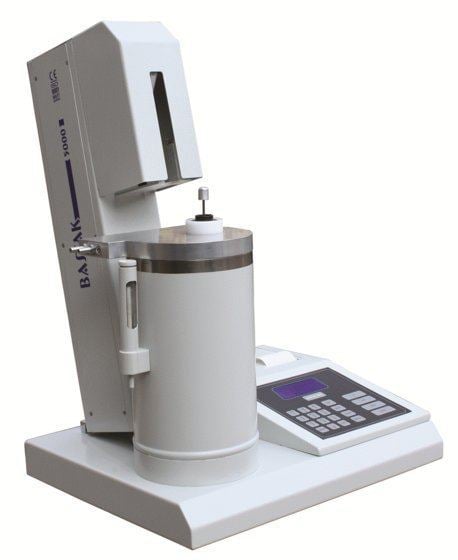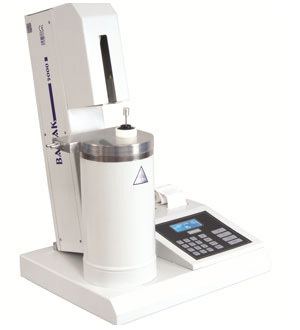 | ||
Similar | ||
What is the falling number test
The Falling Number(FN), also referred to as the Hagberg Number, Method is the internationally standardized (ICC 107/1, ISO 3093-2004, AACC 56-81B) and most popular method for determining sprout damage. With the Falling Number test, so-called weather or sprout damaged wheat or rye, which is disastrous for bread making quality, could be detected at the grain silo intake within a few minutes.
Contents

Sprouting or pre-harvest germination is caused by damp or rainy weather conditions during the final stage of maturation of the crop. The germination causes an accelerated production of the starch degrading enzyme alpha-amylase. Severely sprouted grain kernels can contain several thousand times the amount of enzyme of sound unsprouted kernels. Because of this, very low levels of severely sprouted kernels mixed into sound wheat can cause the entire lot to exhibit significant amylase activity. Since its introduction in the early 1960s, the FN test has become a world standard in the grain and flour milling industries for measuring alpha-amylase activity in wheat, durum wheat, triticale, rye and barley, as well as milled products made from these grains.

Falling number
History

The Falling Number method was developed at the end of the 1950s by Sven Hagberg and his co-worker Harald Perten, both at the Cereal Laboratory of the Swedish Institute for the Crafts and Industries.
Method description

The Falling Number method is uncomplicated, but requires an apparatus which follows the international standards. Such an apparatus consists of a water bath, a test tube, a stirring rod, and a stirring device. The test was performed manually when first employed, test instrumentation today is mostly automated.

To analyze a grain sample it first needs to be ground to a powder; a flour sample can be analyzed as is. The sample is put into the test tube; distilled water is added, and the tube is then shaken vigorously to achieve a homogeneous mix. The tube is then placed in the boiling water bath, and the operator begins to stir the sample. Simultaneously the starch begins to gelatinize and the slurry becomes more viscous. The mixing ensures the gelatinization is homogeneous in the slurry, crucial for consistent test results. An additional effect of the high temperature is that the alpha-amylase enzyme contained in the grain begins to break the starch down into glucose and maltose, thereby reducing the viscosity of the slurry. The amount of starch break-down is directly proportionate to the alpha-amylase activity, meaning that the higher the activity of the alpha-amylase, the lower the viscosity will be.

After 60 seconds of mixing, the stirrer is dropped from the top of the test tube, and the operator measures the time it takes for the stirrer to reach the bottom. That time, measured in seconds, is the Falling Number. When the stirrer is dropped, its speed and thus the time it takes it to fall to the bottom, will be determined by the viscosity of the slurry. In other words, the more sprouted the grain was the higher the alpha-amylase activity will be. The higher the alpha-amylase activity the lower the viscosity of the slurry. The lower the viscosity of the slurry the faster the stirrer will fall to the bottom. That is why more sprouted grain results in a lower Falling Number as Falling Number is the time it takes the stirrer to fall to the bottom.
